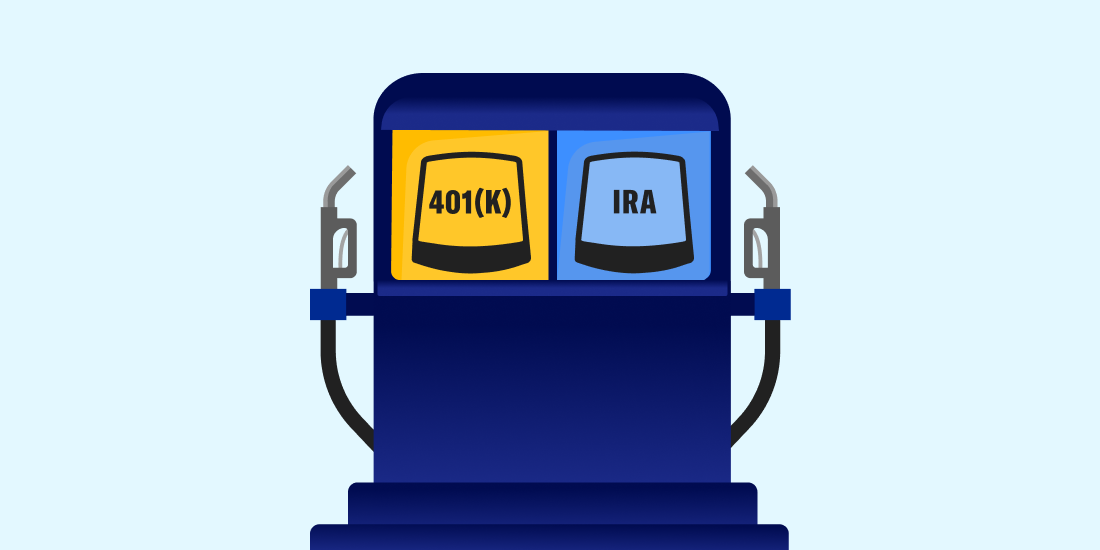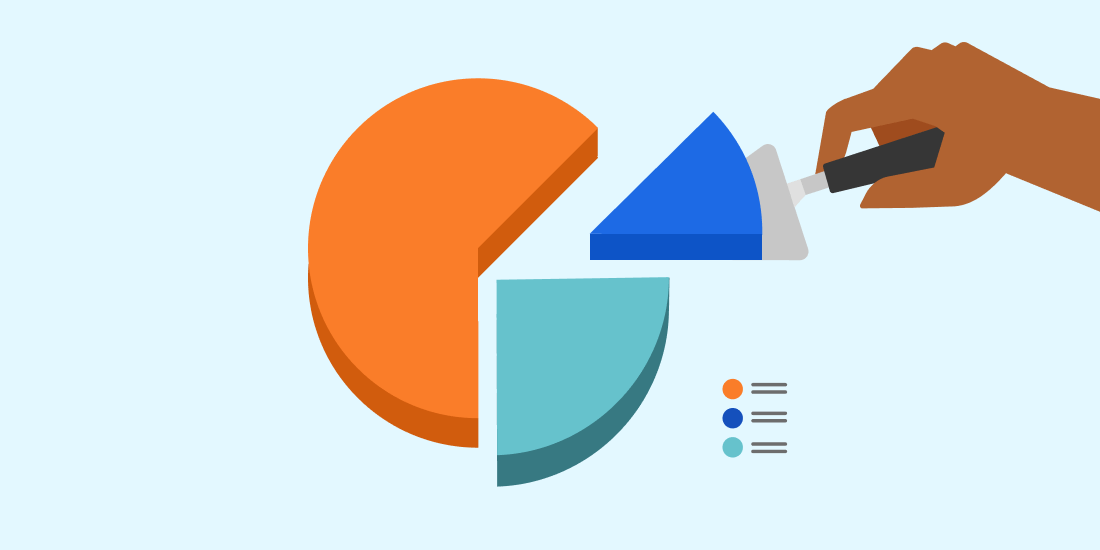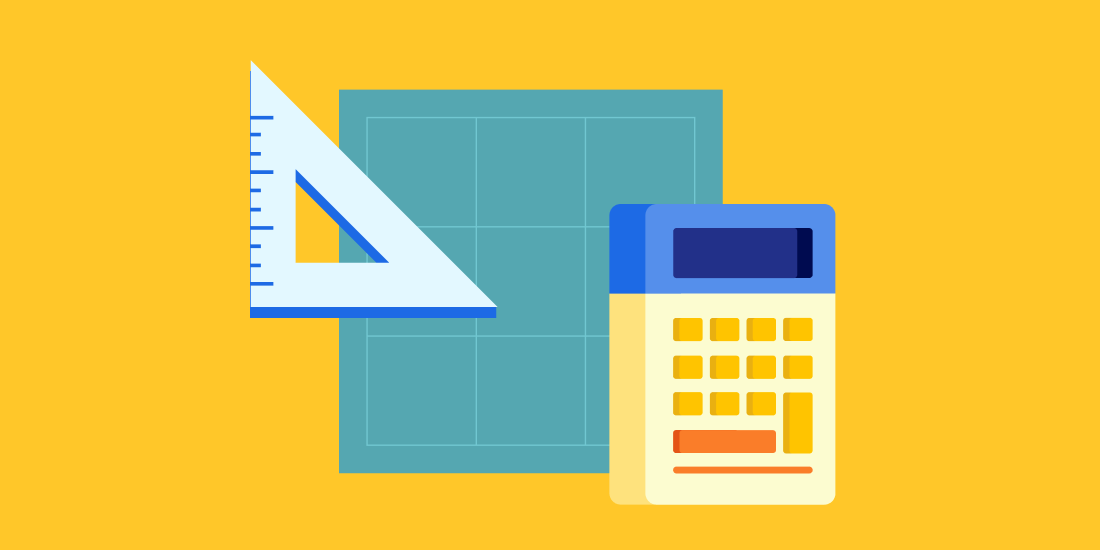Performance

Featured articles
-
![]()
How socially responsible investing connects your holdings to your heart
Learn more about this increasingly-popular category of investing.
How socially responsible investing connects your holdings to your heart Learn more about this increasingly-popular category of investing. Socially responsible investing (SRI), also known as environmental, social, and governance (ESG) investing, screens for companies that consider both their returns and their responsibility to the wider world. It’s a growing market for investors, with assets totaling $30 trillion as of 2022. We launched our first SRI portfolio back in 2017, and have since expanded to a lineup of three options: Broad Impact Social Impact Climate Impact All three are globally-diversified, low-cost, and built to help align your investing with your values. So let’s explore a few ways they do that, before tackling a common question about the SRI category in general: performance. How our Social Impact portfolio lifts up underserved groups Social Impact uses the Broad Impact portfolio’s foundation while adding a trio of funds focused on helping underserved groups get on equal footing. There’s $SHE and $JUST, which screen for U.S. companies demonstrating a commitment toward gender and social equality, respectively. Then there’s $VETZ, our latest addition to the portfolio. $VETZ is the first of its kind: a publicly-traded ETF that mainly invests in loans to active and retired U.S. service members, and the survivors of fallen veterans. These types of home and small-business loans have historically helped diversify portfolios, and they also help lower borrowing costs for veterans and their families. And unlike $SHE and $JUST, which are comprised of stocks, $VETZ is an all-bond fund. So even if you have a lower appetite for risk when investing, your SRI portfolio can maintain an exposure to socially responsible ETFs. How the $VOTE fund is shaking up shareholder activism Remember the “G” in ESG? It stands for governance, or how companies go about their business. Do they open up their books when necessary? Is their leadership diverse? Are they accountable to shareholders? On that last front, there’s the $VOTE ETF found in each one of our SRI portfolios. On the surface, it seems like a garden variety index fund tracking the S&P 500. Behind the scenes, however, it’s working to push companies toward positive environmental and social practices. It does this by way of “proxy” voting, or voting on behalf of the people who buy into the fund. Engine No. 1, the investment firm that manages $VOTE, puts these proxy votes to use during companies’ annual shareholder meetings, where individual shareholders, or the funds that represent them, vote on decisions like board members and corporate goals. In 2021, Engine No. 1 stunned the corporate world by persuading a majority of ExxonMobile shareholders to vote for three new board members in the name of lowering the company’s carbon footprint. And it did all this in spite of holding just .02% of the company’s shares itself. Not a bad return on investment, huh? Does SRI sacrifice gains in the name of good? We now stand eye-to-eye with the elephant in the room: performance. Worrying about returns is common regardless of your portfolio, so it’s only natural to question how socially responsible investing in general stacks up against the alternatives. Well, the evidence points to SRI comparing quite well. According to a survey of 1,141 peer-reviewed papers and other similar meta-reviews: The performance of SRI funds has “on average been indistinguishable from conventional investing.” And while the researchers note that it’s “likely that these propositions will evolve,” they also found evidence that SRI funds may offer “downside” protection in times of social or economic crisis such as pandemics. Your socially responsible investing, in other words, is anything but a charity case. Simplifying the socially responsible space Not long ago, SRI was barely a blip on the radar of everyday investors. If you were hip to it, you likely had just two options: DIY the research and purchase of individual SRI stocks Pay a premium to buy into one of the few funds out there at the time Those days are thankfully in the past, because our portfolios make it easy to express your values through your investing. And our team of investing experts regularly seeks out new funds like $VETZ and updated SRI standards that strive to deliver more impact while helping you reach your goals. Check out our full methodology if you’re hungry for more details. And if you’re ready to invest for a better world, we’ve got you covered. -
![]()
Compound interest: The 8th wonder of the world
We show you the power of compound interest and how to visualize projected compound interest on ...
Compound interest: The 8th wonder of the world We show you the power of compound interest and how to visualize projected compound interest on your Betterment accounts. In this article, we show you the power of compound interest and teach you how to use our tools to see how your investing accounts may grow over time. The main idea: Compound interest is when your earnings from investments are reinvested, growing even more earnings or “compounding” over time. It’s one of the ways your savings grow. How it works: Don’t worry, we won’t get into the complicated math. Let’s look at a scenario instead. But first, we need to know that three things go into creating value with compound interest: Rate of return on your investment or savings. Usually listed as a historical annualized return for stock investing or an annual percentage yield (APY) for savings and cash accounts. Frequency of compounding. For stock investing, this means how often you earn dividends and for a savings or cash account, this means how often you are paid interest. Time period for which your money is invested. The longer this is, the more time your money has to compound. Now let's look at a hypothetical scenario. Pretend two people each have $5,000 of savings. Over a five-year period, from August 2018 to July 2023, they each manage their money differently. Person 1: Keeps the $5,000 in a checking account that earns 0% interest. They still have $5,000 in July 2023 because there was no chance for their money to experience compound interest. Person 2: Invested $5,000 into an investing portfolio on August 1, 2018. With dividends reinvested, they averaged 7.4% annualized returns after fees, and on July 31, 2023, their account was worth $7,145. Compounding works the same way in savings or cash accounts that pay interest. For example, our Cash Reserve account allows you to earn a variable rate APY to compound your savings. You generally pay taxes on earnings in both investing and cash accounts, but even with taxes, your money has the potential to grow over the long term due to compound interest. Visualize compound interest on your Betterment investing account: Our mobile app and desktop platform both offer simple tools to help you see how compounding could impact your goals. Mobile app: Navigate to your investing account and view the Projection graph to see a visualization of how your account may compound over time. Desktop platform: To use the goal forecaster, navigate to your investing goal. Select the “Plan” section, then click the “Open goal forecaster” button. Our goal forecaster tool allows you to enter scenarios for deposit and target date inputs. The projection graph will show you the estimated impact of compound interest on your investment portfolio along with the chance of reaching your goal based on your inputs. -
![]()
Save more, sweat less with recurring deposits
How one click—and the power of dollar cost averaging—can boost your returns
Save more, sweat less with recurring deposits How one click—and the power of dollar cost averaging—can boost your returns Healthy habits like exercising, eating well, and saving are hard for a reason. They take effort, and the results aren’t always immediate. Except in the case of saving, there’s a simple hack that lowers the amount of willpower needed: setting up recurring deposits. So kick off those running shoes, because you barely have to lift a finger to start regularly putting money into the market. $2, $200, it doesn’t matter. This one deposit setting, along with a little help from something called dollar cost averaging, can lead to better returns. Our own data shows it: Betterment customers using recurring deposits earned nearly 3% higher annual returns. *Based on Betterment’s internal calculations for the Core portfolio over 5 years. Users in the “auto-deposit on” groups earned nearly an additional 2.5% over the last year and 2% annualized over 10 years. See more in disclosures. Three big reasons they fared better than those who rarely used recurring deposits include: When you set something to happen automatically, it usually happens. It's relatively easy to skip a workout or language lesson. All you need to do is … nothing. But the beauty of recurring deposits is it takes more energy to stop your saving streak than sustain it. When you regularly invest a fixed amount of money, you're doing something called dollar cost averaging, or DCA. DCA is a sneaky smart investment strategy, because you end up buying more shares when prices are low and fewer shares when prices are high. A steady drip of deposits helps keep your portfolio balanced more cost-effectively. Instead of selling overweighted assets and triggering capital gains taxes, we use recurring deposits to regularly buy the assets needed to bring your portfolio back into balance. Now it’s time for an important caveat: The benefits of dollar cost averaging don't apply if you have a chunk of money lying around that’s ripe for investing. In this scenario, slowly depositing those dollars can actually cost you, and making a lump sum deposit may very well be in your best interest. But here’s the good news: While DCA and lump sum investing are often presented in either/or terms, you can do both! In fact, many super savers do. You can budget recurring deposits into your week-to-week finances—try scheduling them a day after your paycheck arrives so you’re less likely to spend the money. Then when you find yourself with more cash than you need on hand, be it a bonus or otherwise, you can invest that lump sum. Do both, and you may like what you see when you look at your returns down the road.
Considering a major transfer? Get one-on-one help with one of our experts. Explore our licensed concierge
All Performance articles
-
![]()
Four ways we help trim your tax bill
Four ways we help trim your tax bill Mar 24, 2025 12:07:45 PM And why these "invisible" wins matter more than you may think. When you choose an advisor to help guide your investing, you may focus only on what you can see. Things like their investment options, and the expected returns of those investments. Less obvious—but no less important—to your money’s future growth, however, is tax optimization. It sounds boring, but believe us, taxes can steadily eat away at your returns over the years. And the scary part is: you may never even notice. So any advisor worth their salt takes taxes seriously, and strives to minimize them as much as possible. These “invisible” wins are hard to spot in the moment, so let’s shine a light on them now. Here are four sophisticated ways we buy, sell, and hold your shares, all in the name of trimming your tax bill. Choosing which assets go where Rebalancing wisely Choosing which taxable shares to sell (or donate) Harvesting losses 1. Choosing which assets go where From a tax perspective, you have three main account types at your disposal when saving for retirement: Tax-deferred (traditional IRAs, 401(k)s, etc.), where taxes are paid later. Tax-exempt (Roth IRAs, 401(k)s, etc.), where taxes are paid now. Taxable, where taxes are paid both now and later. Because of their different tax treatments, certain types of investments are a better fit for certain accounts. Interest from bonds, for example, is typically taxed at a higher rate than stocks, so it often makes sense to keep them away from taxable accounts. This sorting of asset types based on tax treatments, rather than divvying them up equally across accounts, is known as asset location. And our fully-automated, mathematically-rigorous spin on it is called Tax Coordination. When Tax Coordination is turned on, the net effect is more of your portfolio's growth is shielded in a Roth account, the pot of money you crucially don't pay taxes on when withdrawing funds. To learn more about our Tax Coordination feature and whether it’s right for you, take a peek at its disclosure. 2. Rebalancing wisely When your portfolio drifts too far from its target allocation of assets, our technology automatically rebalances it. But there's more than one way to accomplish that goal. You can simply sell some of the assets that are overweight, and buy the ones that are underweight (aka "sell/buy" rebalancing), but that can realize capital gains and result in more taxes owed. So we first take advantage of any available cash flows coming into or out of your portfolio. When you make a withdrawal, for example, we intentionally liquidate overweight assets while striving to minimize your tax hit as much as possible (more on that below). And when you deposit money or receive dividends, we use those funds to beef up underweight assets. 3. Choosing which taxable shares to sell (or donate) Say there's no way around it: you need to sell an asset. Maybe cash flows aren't enough to keep your portfolio completely balanced. Or you’re withdrawing funds for a major purchase. The question then becomes: which specific assets should be sold? The IRS and many brokers follow the simple script of "first in, first out," meaning your oldest assets are sold first. This approach is easier for your broker, and it can avoid more highly-taxed short-term capital gains. But it often misses the opportunity of selling assets at a loss, and harvesting those losses for potential tax benefits. So our algorithms take a more nuanced approach to selecting shares, and we call this technology TaxMin. TaxMin is calibrated to avoid frequent small rebalance transactions and seek tax-efficient outcomes, things like avoiding wash sales and minimizing short-term capital gains. In the case of donating shares, we apply the same logic in reverse, or TaxMax as we call it. That's because when donating shares, it benefits you to choose the ones with the most gains, since any shares bought as a replacement will effectively have a reset tax bill. 4. Harvesting losses Life is full of ups and downs, and your investments are no exception. At times, their price may dip below what you paid for them. Tax loss harvesting takes advantage of these moments, selling taxable assets that fit this bill, then replacing them with similar ones. The result is you stay invested, and can then use those harvested losses to shift taxes you owe now into the future. The practice essentially sprinkles tax advantages on a portion of your taxable investing. And our fully-automated spin on it, Tax Loss Harvesting+, takes a tax strategy historically reserved for the wealthy and makes it available to the masses. Happy harvesting. In conclusion, we care about taxes Because it’s one of the most reliable ways to boost your returns. We can’t control the market, but tax laws? Those are set by the IRS and broadcast far and wide. And we can help you navigate them wisely. We wouldn’t be doing our job if we didn’t. So the next time you take a peek at your returns, ask yourself how much of that growth will still be there come tax time. If you’re a Betterment customer, you can rest assured we’re working tirelessly to minimize those tax drags. You may not realize it right away, and rightfully so. Live your life, and leave the tax toiling to us. -
![]()
U.S. stocks have been hot, so why bother going global?
U.S. stocks have been hot, so why bother going global? Jan 7, 2025 1:27:19 PM If you’re feeling S&P envy, you’re not alone. Here’s the case for keeping a little international exposure in your investing. At some point in your investing journey, you may look at your returns and wonder if they could be better. And if you're a Betterment customer? Someone who's been invested in one of our globally-diversified portfolios? Be prepared for one question in particular to creep into your mind: "Wait, why isn’t my Core portfolio keeping up with the S&P 500?" The question comes up from time to time — and the answer largely lies in a little thing called home bias. To better understand it, let's first take a quick tour through the magical world of markets. Hello, world. We're here to invest. We talk a lot about the "market" at Betterment, but in reality there is no one, single market. Instead, a bunch of interconnected markets are spread out across the world. And broadly speaking, from our perspective here in the States, you can place them into one of three buckets: The U.S. market International developed markets (Japan, much of Europe, etc.) International emerging markets (Brazil, India, etc.) The U.S. market is big, but it's far from being the only player in the game. There are still trillions of dollars of assets trading hands in international markets. It's why our Core portfolio, built in part on the idea that more diversification equals less risk, roughly mirrors the relative weights of these players. The U.S. market has been on a tear since 2010. But that's not likely to last forever. So let's switch gears to performance, and how to look at recent trends through a more historical lens. Hello, home bias ("U-S-A! U-S-A!”) American exceptionalism is in our blood; we can't help it. It also shows up in our investing by way of home bias, or the tendency for American investors to favor American markets. And is it any surprise right now? The U.S. economy has recovered from the pandemic far faster, and to a much larger extent, than other countries. The S&P 500, though it doesn’t represent the total U.S. stock market, is composed of the biggest American companies, name brands like Apple and Ford, so it's become shorthand for investing's Team America. And while it’s been surging this decade, international markets cleaned up in the 2000s. Historically-speaking, we take turns in the lead every 5 to 10 years. So what’s an investor to do? The cautionary tale of picking stocks applies here, because we don't advise picking markets either. If you're investing for the long term, the odds are good the U.S. market will hit a rough patch at some point. And in that scenario, a globally-hedged portfolio will very likely smooth out your returns from year to year, making your investing journey feel less like a hair-raising roller coaster. That being said, diversification is a sliding scale. There is no pass/fail, no bad or good. And sometimes, good enough is good enough. Imagine you've been saving for retirement the last 40 years. The difference in annualized returns for an all-U.S. stock portfolio vs. a globally-diversified one (e.g. 60% U.S.) over that time span would have been (drumroll, please): 1.15%. And while 1% makes a difference over time (it’s why we harp on taxes and fees so much), if you've been saving steadily over that time, you're likely in good shape either way. So here's yet another chance to breathe easy. Both options—All-American and Mostly-American—have been reliable roads to long-term wealth in the past 40 years. The numbers, while purely hypothetical and educational in nature, drive home that point. They don’t reflect the performance of Betterment customers, but rather two different ways of constructing a portfolio. We offer several globally-diversified portfolios, each one made up mostly of U.S. equities, and two additional ways to keep your investing even closer to home: Invest in our Flexible Portfolio and reallocate your international exposure to U.S. asset classes. Sign up for Betterment Premium and get access to exclusive investing options like a U.S.-only portfolio. Either way, it’ll be home sweet home (bias). -
![]()
Should you fill up your 401(k) first, or your IRA?
Should you fill up your 401(k) first, or your IRA? Oct 24, 2024 11:30:19 AM Navigating one of retirement saving’s first forks in the road. Can you have both a 401(k) and an IRA? Yes! But having access to both accounts begs the question: Which one is more deserving of your retirement dollars? The answer, as it so often does in personal finance, depends on your situation. So let’s explore when a 401(k)-first mentality makes sense, and when it doesn't, before closing things out with a wildcard third option that might warrant both your attention and your savings. A quick refresher on retirement accounts For the sake of this conversation, we're focusing on the two most common retirement accounts: the IRA and the 401(k), including the non-profit/public equivalent 403(b) account. Both come with built-in tax advantages, annual contribution limits, and eligibility criteria: 401(k) Accessible to: Anyone whose employer offers one 2024 contribution limit: $23,500 (for those under 50) IRA Accessible to: Anyone whose Modified Adjusted Gross Income (MAGI) falls below the IRS's eligibility limits (see table below) qualifies for tax benefits. 2024 contribution limit: $7,000 (for those under 50) 2025 IRA income limits Traditional IRA* Modified Adjusted Gross Income (MAGI) Roth IRA Modified Adjusted Gross Income (MAGI) Full tax deduction $0-$77,000 (single) Full contribution $0-$145,999 (single) $0-$123,000 (married) $0-$229,999 (married) Partial tax deduction $77,001-$86,999 (single) Partial contribution $146,000-$160,999 (single) $123,001-$142,999 (married) $230,000-$239,999 (married) No tax deduction** $87,000 and up (single) No contribution $161,000 and up (single) $143,000 and up (married) $240,000 and up (married) *If covered by a retirement plan at work **Anyone is eligible to make taxable contributions to a traditional IRA Source: IRS Power ranking your retirement accounts In general, there are a few reasons why you might default to the 401(k), including but not limited to: You can contribute by way of payroll deductions and ease the sting of saving. Many employers offer matching contributions, aka free money. And you can contribute significantly more money to them than IRAs. Altogether, that's a lot of pros working in the 401(k)’s favor. But not all 401(k)s are created equal. Some providers charge more for limited investment options. According to the 24th edition of the 401k Averages Book, the average investment expense for some smaller plans1 was 1.12%. By comparison, you can invest with a Betterment IRA for an all-in fee well south of 1%. So ask your employer or 401(k) provider for help sizing up your total costs. Or take a look at your 401(k) statement for code names like: Management fees Asset-based fees Operating expenses Expense ratios If you find your 401(k) costs are significantly steeper than an IRA, consider the following order of operations: Fill up your 401(k) up to your employer’s match, assuming they offer one. Max out your IRA, assuming you’re eligible. Come back to your 401(k). On the other hand, if your 401(k)’s fees are competitive, congratulations! Things just got simpler. Consider maxing it out first before turning your attention to an IRA, or that wildcard option we mentioned earlier. A quick aside on the Health Savings Account (HSA) Sure, the name says "health," but HSAs can be repurposed for retirement savings as well. They come with a $4,150 contribution limit for individuals, and they’re available to anyone enrolled in a high-deductible health plan (HDHP). They’re also triple tax-advantaged, meaning money is tax-free going in, tax-free while it grows, and tax-free coming out, assuming it’s used for qualified expenses. That’s one more tax perk than 401(k)s and IRAs, which make you choose between either tax-deferred contributions or tax-free withdrawals. Tax-free contributions Tax-free growth Tax-free withdrawals Traditional 401(k)/IRA ✓ ✓ X Roth 401(k)/IRA X ✓ ✓ HSA ✓ ✓ ✓ So if an HDHP is right for your healthcare needs, consider prioritizing an HSA before an IRA. Between those two accounts and the 401(k), that's more than $30,000 worth of annual investing potential. Fill up those tanks, and you’ll be well on your way to retiring. Now just enjoy the ride. -
![]()
The savvy saving move for your excess cash
The savvy saving move for your excess cash Aug 6, 2024 2:37:52 PM And why taking the “lump sum” leap may be in your best interest We're living in strange financial times. Inflation has taken a huge bite out of our purchasing power, yet investors are sitting on record amounts of cash, the same cash that's worth 14% less than it was just three years ago. High interest rates explain a lot of it. Who wouldn't be tempted by a 5% yield for simply socking away their money? But interest rates change, and we very well could be coming out of a period of high rates, leaving some savers with lower yields and more cash than they know what to do with. So let's start there—how much cash do you really need? Then, what should you do with the excess? How much cash do you really need? Cash serves three main purposes: Paying the bills. The average American household, as an example, spends roughly $6,000 a month. Providing a safety net. Most advisors (including us) recommend keeping at least three months' worth of expenses in an emergency fund. Purchasing big-ticket items. Think vacations, cars, and homes. Your spending levels may differ, but for the typical American, that's $24,000 in cash, plus any more needed for major purchases. If you're more risk averse—and if you're reading this, you just might be—then by all means add more buffer. It's your money! Try a six-month emergency fund. If you’re a freelancer and your income fluctuates month-to-month, consider nine months. Beyond that, however, you're paying a premium for cash that’s not earmarked for any specific purpose, and the cost is two-fold. Your cash, as mentioned earlier, is very likely losing value each day thanks to inflation, even historically-normal levels of inflation. Then there's the opportunity cost. You're missing out on the potential gains of the market. And the historical difference in yields between cash and stocks is stark, to say the least. The MSCI World Index, as good a proxy for the global stock market as there is, has generated a 8.5% annual yield since 1988. High-yield savings accounts, on the other hand, even at today’s record highs, trail that by a solid three percentage points. So once you've identified your excess cash, and you’ve set your sights on putting it to better use, where do you go from there? What should you do with the excess? Say hello to lump sum deposits. Investing by way of a lump sum deposit can feel like a leap of faith. Like diving into the deep end rather than slowly wading into shallow waters. And it feels that way for a reason! All investing comes with risk. But when you have extra cash lying around and available to invest, diving in is more likely to produce better returns over the long term, even accounting for the possibility of short-term market volatility. Vanguard crunched the numbers and found that nearly three-fourths of the time, the scales tipped in favor of making a lump sum deposit vs. spreading things out over six months. The practice of regularly investing a fixed amount is called dollar cost averaging (DCA), and it’s designed for a different scenario altogether: investing your regular cash flow. DCA can help you start and sustain a savings habit, buy more shares of an investment when prices are low, and rebalance your portfolio more cost effectively. But in the meantime, if you’ve got excess cash, diving in with a lump sum deposit makes the most sense, mathematically-speaking. And remember it’s not an either-or proposition! Savvy savers employ both strategies—they dollar cost average their cash flow, and they invest lump sums as they appear. Because in the end, both serve the same goal of building long-term wealth. -
![]()
Is the S&P 500 the best investing benchmark?
Is the S&P 500 the best investing benchmark? Sep 7, 2023 3:27:31 PM For many investors, the S&P 500 might not be the most accurate benchmark for their portfolio. Let’s find out why. The S&P 500 is an index commonly used by analysts and investors to track the health of the stock market and the general economy. But should you compare your portfolio’s performance to the S&P 500? Here are a few reasons why it may not be the best benchmark. What to remember: The S&P 500 index only includes the leading companies in the United States. If you have a diversified portfolio across global markets and industries, the S&P 500 is not an apples-to-apples comparison. Fast facts: Here are a few things to know about the S&P 500 and the global stock market when considering using an index as a benchmark. The S&P 500 index was launched in 1957 by the credit rating agency Standard and Poor's. The SEC lists six major stock market indexes on their website and there are dozens of indexes used across the world. The S&P 500 index includes 500 leading U.S. companies, representing only about 80% of the U.S. stock market and only about 42% of the global stock market. Additionally, the index is weighted by float-adjusted market capitalization which means that larger companies end up being a larger portion of the index, making it less of an apples-to-apples comparison for the global market. Economists at Goldman Sachs predict that emerging markets will grow at a faster rate than U.S. equities, making the S&P 500 even less of a global index than it is today. What’s the best index to use as a benchmark? It depends. To know which index to compare your portfolio to, you need to ask, “Which markets am I invested in?” Many Betterment portfolios are globally-diversified, making the MSCI All Country World Index (ACWI) a better benchmark than the S&P 500. The ACWI covers 47 global markets in both developed and emerging economies, representing 99% of the investable global equity market. It’s about your goals: It’s also important to remember that benchmark indexes are not designed with your goals in mind. Your personal portfolio at Betterment is meant to meet your goals, not track a general benchmark. As you invest with us, your asset allocation may change to protect your wealth and keep your investments in line with your risk appetite. Next time you see a news article reporting on recent movements of the S&P 500 you can relax knowing that your portfolio is designed for your goals, not the index’s. -
![]()
The keys to understanding investment performance
The keys to understanding investment performance Jul 24, 2023 12:00:00 AM Understanding investing performance doesn’t have to be a challenge. Here’s how we simplify it for you. In this guide, we look at how we crunch numbers for you and provide two tools to analyze your returns. Plus, see four questions to ask so you understand the overall performance of an investing platform. But first, don’t fall for fallacies: Typical media coverage may skew your perspective. Avoid these two fallacies when looking at your own investing performance. The Dow/S&P 500 Fallacy: Benchmarks like the Dow Jones Industrial Average are popular, but they don’t actually tell you much about the stock market. The Dow only represents 30 US stocks. And the S&P 500 doesn’t give you a full picture of the US market—let alone the global market. The Points Fallacy: It’s common to hear reporters say things like, “Dow loses 500 points.” But it’s far more valuable to look at the percentage change. If the Dow is at 35,000 points, a 500-point drop is less than two percent. That’s not something long-term investors generally need to worry about. Instead of falling for fallacies: To know how you’re performing relative to the market, ask, “Which market?” Many Betterment portfolios are globally-diversified, making the MSCI All Country World Index a better benchmark than the S&P 500 or Dow. How Betterment simplifies looking at performance: We crunch the numbers for you, showing you three aspects of performance. Your combined accounts. We pull together all of your accounts and show their performance as one number. You can also zoom in on the account level. Your total returns. Since changes in the prices of assets in your portfolio are more volatile, and don't tell the full picture, we look at total returns which include price changes and dividends together instead of breaking them out separately. Your long-term timeline. We show your performance over as long a period as possible to help keep you focused on the long term and minimize short-term stress. Two tools to analyze your returns: We don’t encourage frequent monitoring of performance, but when you do want to review performance, we have two tools to help you understand the big picture. Tool #1: Time-weighted return. Time-weighted return is the default return you see on your Betterment accounts. When you invest, you often have deposits made over time. The time-weighted return imagines that all deposits were made on your first day of investing. Why would you want to do this? Because cash coming in and out of your portfolio at different times can distort and complicate your returns due to the nature of the constantly-fluctuating stock market. Also, if you were comparing returns across two different accounts with two different cash flow patterns, you couldn’t be sure if the difference was due to the investments or due to the timing of the cash flows. The time-weighted return can refer to a price-only return or a total return. Price return reflects only the change in the price of the asset, while total return reflects both price and reinvested income. By default, Betterment displays the total return for a more comprehensive view of performance. Tool #2: Internal rate of return. Internal rate of return can be displayed on the performance screen of each account by clicking on the “Show balance details” link. The internal rate of return is affected by each and every instance of cash flow that goes in and out of your portfolio. Cash flows at Betterment can include deposits, withdrawals, dividends, and fees. Internal rate of return does a better job of answering the question, “What are the average returns on the dollars I personally deposited into Betterment?” as opposed to “How well does Betterment design and manage the portfolios I have with them?” Looking beyond returns is important when considering an investing platform or fund. Here are four questions to ask: What are the commissions, trade fees, and assets under management (AUM) fees? How much time and effort are required of you to manage the investments? Does the investing philosophy align with your values? Does the platform offer tax efficiencies such as tax loss harvesting and asset location? (Note: Your stated returns likely won’t take into account any potential value these tools may have added.)
Looking for a specific topic?
- 401(k)s
- 529s
- Asset types
- Automation
- Benchmarks
- Bonds
- Budgeting
- Compound growth
- Diversification
- Donating shares
- ETFs
- Education savings
- Emergency funds
- Financial advisors
- Financial goals
- Getting started investing
- Health Savings Accounts
- Home ownership
- IRAs
- Interest rates
- Investing accounts
- Market volatility
- Performance
- Portfolios
- Preparing to retire
- Retirement income
- Retirement planning
- Risk
- Rollovers and transfers
- Roth accounts
- Stocks
- Tax Coordination
- Tax loss harvesting
- Taxable accounts
- Taxes
No results found









